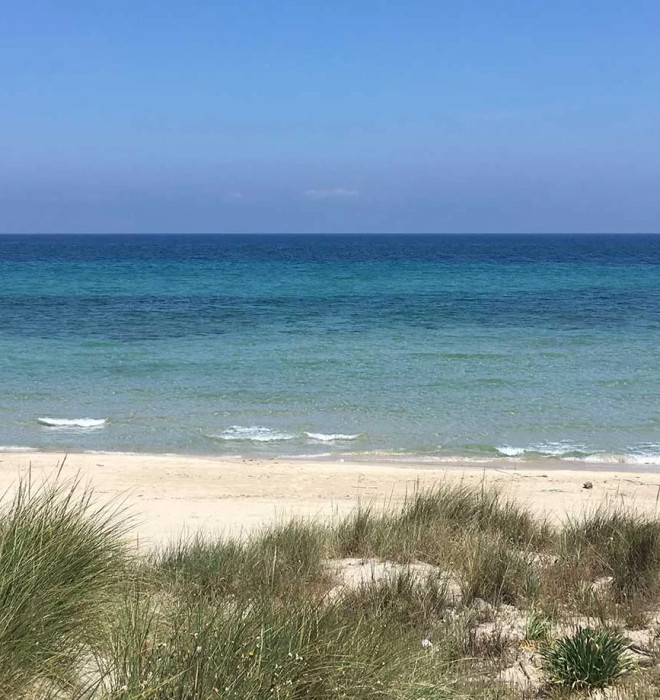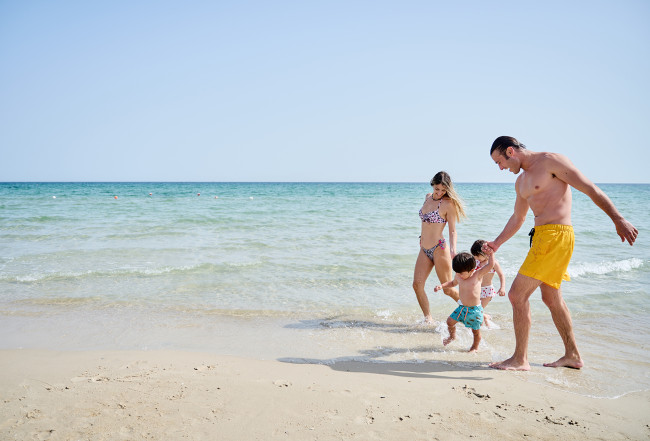Marina di Lecce (1)
Torre Rinalda
The village of Torre Rinalda lies on the east coast of the Salento peninsula and is part of the Marina di Lecce, a city of art and capital of the Salento peninsula, from which it is a few kilometers away. The coast is entirely of fine sand and protected by an evocative cordon of dunes covered with Mediterranean scrub. The area is characterized by expanses of olive trees, within which centuries-old masserias are dislocated, making the landscape even more evocative. The locality takes its name from the Watch Tower, built in the 16th century by the Spanish to protect the coast from attacks by Saracen pirates.
The Abbey of Cerrate
Not far from the village, nestled in a picturesque expanse of centuries-old olive trees, stands the thousand-year-old Abbey of Santa Maria delle Cerrate, restored to its former glory by the Italian Environmental Fund (FAI) after a long renovation, which began in 2012 and ended in 2018. The complex is one of the most representative examples of the Apulian Romanesque style.
On the occasion of its reopening, the abbey also returned to host the traditional agricultural fair "Lu panieri," a market of "doughnuts, toys, crockery, dried and fresh fruit and various smallwares," which opened up to handicrafts, traditional Salento trades and local products with more than 50 craftsmen present: from chair stuffers to tinsmiths, from makers of ceramics, olive wood and Lecce stone to food and wine products of Salento cuisine.
Forest and Marshes of Rauccio
The Torre Rinalda locality is located within the Bosco e Paludi di Rauccio Regional Nature Park, consisting of an extraordinary sampling of natural environments and the rural landscape typical of the Salento peninsula: forest, Mediterranean scrub, "garrigue," marsh and lake areas, grasslands and pine forests.
"Rauccio" is the name of the fortified tower-masseria, the forest and the canal, consisting of two arms, which flows south of the same forest and pours its waters into the coastal lagoon Idume, between the marine localities of "Spiaggiabella" and "Torre Chianca." The site's rich flora and fauna are protected by the WWF.
Lecce, city of art
Its ancient Messapian origins and archaeological remains of Roman rule place it among Italy's cities of art. Lecce emerges among the most striking destinations in southern Italy for the richness and exuberance of the 17th-century Baroque churches and buildings, made with the use of typical Lecce stone, whose golden color gives warmth to the streets and alleys of the historic center. The architectural development and the decorative enrichment of the facades were particularly careful during the Kingdom of Naples and characterized the city in such an original way that it gave rise to the definition of Lecce Baroque.
Among the city's most important architectural monuments should be mentioned its churches. In addition to the cathedral, which is the center of religious life, forty churches are scattered in the streets and squares of Lecce, three of which have the dignity of minor basilicas.
The Basilica of Santa Croce, in particular, with its iconic rose window, is one of the most magnificent symbols of Lecce architecture. The old city gates, the Charles V Castle, and the ancient Roman Amphitheater in Piazza Sant'Oronzo are just some of the main attractions that make Lecce an unmissable tourist destination.
Lecce has a deep-rooted eno-gastronomic tradition. Even today it is still possible to taste the dishes of yesteryear such as Ciceri e Tria, Municeddhre, Turcinieddhri, small pieces of horse meat, Polpo in pignata, Cotognata and many more.
Also typical is the bread with olives called Puccia. Also popular are "pittule," fritters whose dough can also be enriched with tomatoes and capers, anchovies, cauliflower, and turnips.
As far as "street food" is concerned, one must try Rustico Leccese, a thin baked pastry filled with a mixture of mozzarella, tomato, béchamel and pepper. Equally typical is Frisa, a doughnut of biscuit bread typically seasoned with oil, salt, tomato and oregano.
Highly renowned is the pastry in which Pasticciotto Leccese, pastry cream-filled, Fruttone, Bocche di dama, Pasta di mandorla, Spumone salentino, Mustazzoli and Cupeta stand out.
In the Salento dialect, the word "mieru" (from the Latin "merum," meaning true, forthright) is used to refer to wine, an expression is due to the strong character of the wine produced in Salento. The peninsula's wine excellences are varied: from reds produced with Primitivo, Negroamaro and Malvasia Nera to whites with Malvasia bianca, Bombino bianco and Verdeca.




